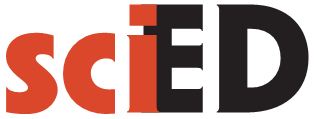Abstract
This paper is an extension of my plenary talk in SEMT 11 (Vinner, 2011) in which I promised to elaborate on some issues that I could not discuss at the talk because of time restrictions. The paper recommends that, in addition to the mathematical knowledge needed for teaching in elementary schools, attention should be given to other aspects of the teacher’s work. It is suggested that the rationale of teaching mathematics as a compulsory subject to the entire population should be discussed with the teachers as well as the ultimate goals of education. The paper recommends also avoiding in teacher training topics which are beyond the zone of proximal development (ZPD) of the teachers.References
AUSUBELL, D. Educational Psychology: A Cognitive View. Holt, Rinehart and Winston, 1968.
BALL, D. B., HILL, H. C., BASS, H. Knowing mathematics for teaching. American Educator, Fall, 2005, 14–46.
BROUSSEAU, G., SARRAZY, B. Glossaire de quelques concepts de la theorie des situations didactiques en mathematiques. Bordeaux : DAEST, Universite Bordeaux. G, 2002
CHOPIN, M. P., NOVOTNÁ, J. Contribution of the theory of didactical situations to mathematics education, The Proceedings of the International Symposium on Elementary Math Teaching at Charles University (SEMT 11), Prague, August 21–26, 2001. Eds. Novotná, J., Moraová, H., 2011, 361–363.
CONFREY, J. Student voice in examining “Splitting” as an approach to ratio, proportion, and fractions. Proceedings of PME 19, Recife, Brazil. Vol. 1, 1995, 3–29.
COURANT, R., ROBINS, H. What is mathematics? New York : Oxford University Press, 1948.
DUDLEY, U. What is mathematics for? AMS Notices, May 2010, Vol. 57, (7), 608–613.
GARDNER, H. Multiple intelligences: The theory in practice. New York : Basic Books, 1993.
GOLEMAN, D. Emotional intelligence. Bantam Books, 1995.
GOULD, S. J. The Mismeasure of Man. W. W. Norton & CO Inc., 1981.
GUBERMAN, R. The relationship between the developmental level of arithmetic thinking of preservice teachers, and the ability expected from them in meaningful learning. Unpublished Ph.D. dissertation. Ben Gurion University of the Negev, Israel (Hebrew with an English abstract), 2007.
HERSH, R. What is mathematics, really? Vintage, 1998.
MOLIERE. The Would-be Gentleman. In: Five Plays, Translated by John Wood, the Penguin Classics, 1953. (p. 2 and further), 1670.
NCTM. Principles and Standards for School Mathematics. Reston, Virginia, 2000.
PANDISCIO, E. A., KNIGHT, K. C. An investigation into the van Hiele levels of understanding geometry of preservice mathematics teachers, Journal of Research in Education, 2011, 20 (1), 45–52.
PELED, I., BALACHEFF, N. Beyond realistic considerations: Modeling conceptions and controls in task examples with simple word problems. ZDM 43, 2011, 307–315.
SCHOENFELD, A. Mathematical problem solving. New York, NY : Academic Press, 1985.
TAPLIN, M. Teaching values through a problem solving approach. The INTERNET: A Compilation of Papers by Dr. Margaret Taplin, 2002, 72–88.
TIROSH, C. The ability of prospective teachers to prove or to refute arithmetic statements. Unpublished Ph.D. dissertation. Hebrew University of Jerusalem, Israel (Hebrew with an English abstract), 2002.
VINNER, S. The pseudo-conceptual and the pseudo-analytical thought processes in mathematical learning. Educational Studies in Mathematics 34, 1997, 97–129.
VINNER, S. From solving equations to the meaning of life: mathematics, rationality and values. ZDM 39, 2007, 183–189.
VINNER, S. Some missing dimensions in mathematics teacher education. In D. Tirosh, T. Wood (Eds), The International Handbook of Mathematics Teacher Education, Vol. 2: Tools and Processes in Mathematics Teacher Education, Sense Publisher, 2008, 305–320.
VINNER, S. The role of examples in the learning of mathematics and in everyday thought processes. ZDM 43, 2011, 247–256.
VINNER, S. What should we expect from somebody who teaches mathematics in elementary schools. The Proceedings of the International Symposium on Elementary Math Teaching at Charles University (SEMT 11), Prague, August 21–26, 2001. (Eds) Novotná, J., Moraová, H., 2011, 31–43.
VYGOTSKY, L. Thought and language (English translation). Cambridge, MA : MIT Press, 1986.
WITTMANN, E. C. Mathematics Education as a “Design Science”, Educational Studies in Mathematics 29, 1995, 355–374.
YAARI, M. Personal communication. 2005.
Authors who publish with this journal agree to the following terms:
- Authors retain copyright and grant the journal right of first publication with the work simultaneously licensed under a Creative Commons Attribution License that allows others to share the work with an acknowledgement of the work's authorship and initial publication in this journal.
- Authors are able to enter into separate, additional contractual arrangements for the non-exclusive distribution of the journal's published version of the work (e.g., post it to an institutional repository or publish it in a book), with an acknowledgement of its initial publication in this journal.
- Authors are permitted and encouraged to post their work online (e.g., in institutional repositories or on their website) prior to and during the submission process, as it can lead to productive exchanges, as well as earlier and greater citation of the published work (See The Effect of Open Access).
